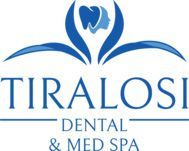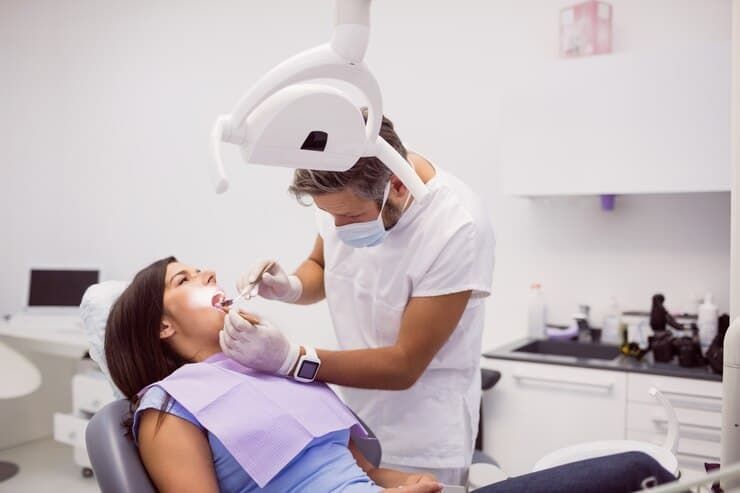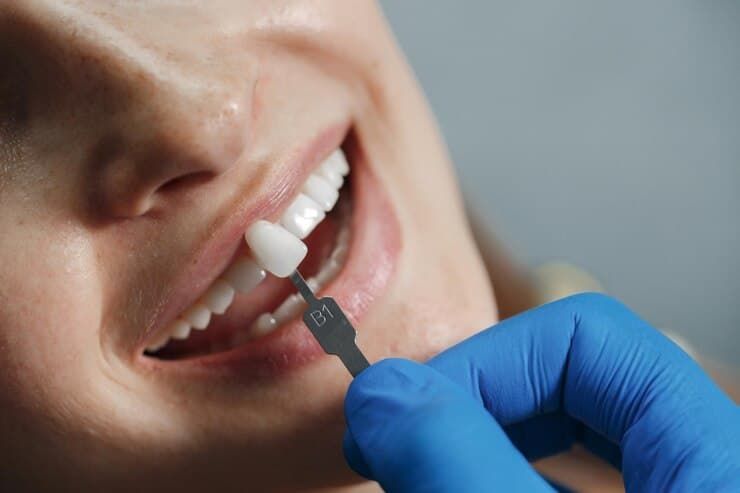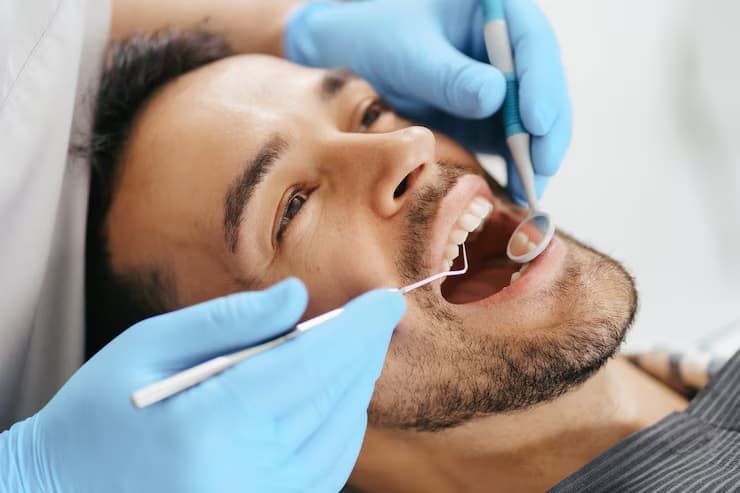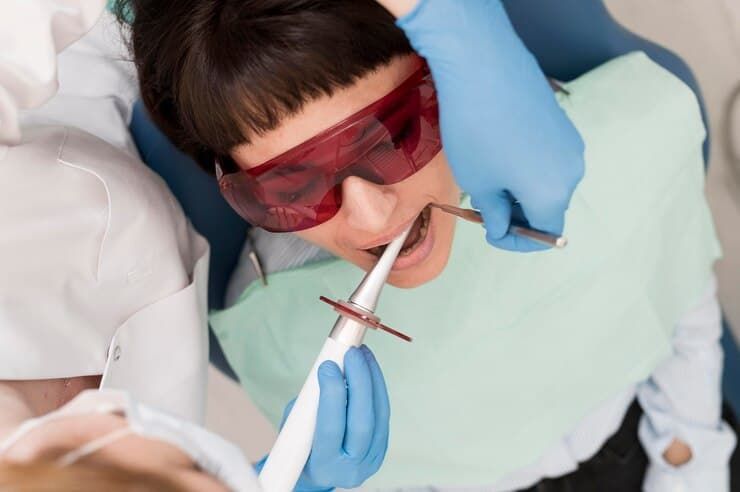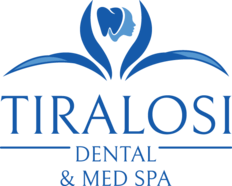Dental Bridge Cost Without Insurance | Tiralosi Dental & Med Spa
Cost of Dental Bridge Without Insurance

Dentistry has made great strides in the last couple of decades. There are many new and useful innovations in dentistry, from 3D oral scanning and dental lasers to advanced digital imaging and invisible aligners. One such innovation is dental bridging. In this article, you will learn what a dental bridge Lake Mary is, how it works, and how much is a bridge without insurance.
What is a Dental Bridge?
A dental bridge is a dental fixture used to replace a missing tooth or teeth. If you have lost a tooth to illness, accident, or trauma, a Dentist Lake Mary will fill in the gap where the lost tooth was with a prosthetic tooth. This fake tooth, called a pontic, only replaces the crown and has no natural tooth-like components within.
It is held in place by a permanent attachment to the abutments (the natural teeth on either side of the gap that is to be filled). It acts very much like a bridge between the natural teeth you have, hence the name.
Dental bridges can be used to replace one tooth or several missing teeth. This procedure isn’t only for cosmetic or aesthetic purposes. It can also help prevent your natural teeth from extending or evading into the gap, effectively ruining your dentition or causing an imbalance in your bite. Getting a dental bridge can also support your remaining teeth, lips, and jaw, improve your speech, and improve your chewing.
Types of Dental Bridges
There are 4 basic types of dental bridges. Each of these have their applications and specific requirements, and depend on different factors such as dental health, the number of teeth to be replaced, and the patient’s financial capacity. The 4 types of dental bridges are:
1. Traditional Dental Bridge
These are the traditional dental bridges that dentists have used for several decades. They are reliable and long-lasting and give a natural and unnoticeable tooth replacement. Dentists fix this type of bridge by using a dental bridge that covers the gap as well as the adjacent teeth with a crown. The false teeth are then attached to the crowns.
The crown covering the adjacent natural teeth proves to be the only downside as the natural teeth being covered don’t have any decay. It is, however, necessary for stability.
Dental bridges can be either made of ceramic or porcelain. Porcelain dental bridges are typically more expensive than usual as the bridge is made using special tooth-colored porcelain. This is to give you the most natural-looking results. Because porcelain-only dental bridges are fragile, dentists only use them for front teeth.
If you opt for porcelain bridges for other parts of your mouth, you will require a metal and porcelain dental bridge, which is a metal covered with tooth-colored porcelain. This is a stronger option and best for your back teeth.
2. Cantilever Dental Bridge
This type of bridge I use when there is only one natural tooth adjacent to the gap. This typically happens when you have lost a row of teeth at the back of your mouth. A cantilever dental bridge will require attachment to only one abutment (natural tooth) on one side of the gap.
These teeth are typically at the back of the mouth, so they will bear most of the force of chewing. This means the material used for the bridge needs to be strong to bear the stress. This type of dental bridge causes a lot of strain on the abutment; sometimes, the anchoring natural teeth fracture or come loose after some time due to the strain.
3. Maryland Dental Bridge
The Maryland dental bridge is the least invasive type of dental bridge; instead of placing a crown on the adjacent teeth, as with traditional and cantilever bridges, the false teeth are simply held in place by a metal bar or framework.
While this seems like an easier option, it’s worth noting that the Maryland bridges are not very secure and can come uncemented in places that receive a lot of force, e.g., the molar, during chewing. Some people also find the metal framework uncomfortable and get in the way of the tongue and gums.
4. Implant-Supported Bridge
Implant-supported bridges are fixed to a dental implant Lake Mary directly, as opposed to other teeth connected to adjacent teeth by crowns or bonding.
Your dentist will firmly insert a dental implant made of metal into your jawbone where a tooth is missing to support the bridges that will be fixed over the gap. The procedure may require several implants to support the bridges if you're filling a larger gap. They blend in naturally with your teeth, and these bridges are usually the most expensive. We highly recommend this bridge for patients with three or more consecutive missing teeth.
Factors Impacting the Price of Dental Bridges Without Insurance
How Much Does a Dental Bridge Cost Without Insurance? The cost of dental bridge without insurance will mostly depend on the type of dental bridge and the material used. Some cases may also be out-of-pocket costs for appointments, exams, x-rays, or anesthesia. The estimated range for dental bridges is $1,500 to $5,000, spending on several factors. Factors affecting the cost of dental bridges include:
1. Number of teeth required
2. Materials and the type of bridge used
3. Level of difficulty with the placement
4. Geographic location
5. Dental procedures like teeth cleaning, gum disease, etc.
6. Insurance
The average dental bridge cost without insurance for the different types is:
1. Traditional: $1,500 to $5,000 per pontic and dental crowns Lake Mary for each abutment tooth.
2. Cantilever: $2,000 to $2,700
3. Maryland: $1,500 to $2,500 for one Pontiac with the framework attached to the adjacent natural teeth
4. Implant-Supported: $5,000 to $15,000 for bridge, 2 dental implants spanning 3-4 teeth
Learn More About Dental Bridge Treatment in Lake Mary, FL
As with all other health procedures, dental bridges will typically cost less with financial aid from insurance. If you need a Lake Mary dentist that you can trust for the best care and results, look no further than Tiralosi Dental & Med Spa. We work exclusively with the most brilliant and capable dentists to ensure that you and your dental health are in safe hands. Contact us today to schedule an appointment or call at (407)333-1335 for your dental bridge.



